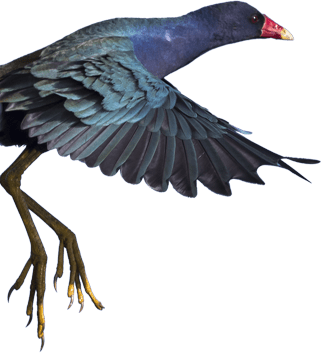[vc_row][vc_column][vc_column_text]
Enjoy a relaxing eco tour on a warm summer evening watching crocodiles on the turbid freshwater riverbanks with birds diving for fish in your wake. You’d never guess that sea turtles were on the National Park Service’s endangered species list until 1987. The Florida Everglades National Park was designated Internationally significant in 1976 by the United Nations for its balanced interplay of nature and humanity and its contributions to 2000 years of human history. Endangered Florida panthers live in the hardwood forests of the dry Long Pine Key.
Subtropical World Heritage Site
Water flowing over and through vegetation-covered layers of limestone in the World Heritage Site forms unique habitats with 120 species of trees, 300 species of birds, and abundant epiphytic bromeliads and wild orchids. Adjacent habitats produce picturesque landscapes where the drama of predation and survival come alive at high tide. Endangered sea turtles share predatory alligator holes and forage for algae, seagrass, anemones, mollusks, crustaceans and jellyfish.
Wild Orchids
Unique for its flowing water and lush green landscape, the International Biosphere Reserve is home to 25 varieties of hanging epiphytic orchids dependent on fungi for nutrients and insects for pollination. Orchids hanging in the shade of tall trees have spongy roots that soak up water and nutrients. Pseudobulbs full of stored water help some species of orchids survive droughts.
The National Park Service
The National Park Service preserves the cultural heritage aspect of the historic national park that spans 2000 years of our history, for us in our lifetime and for generations to come. Without the South Florida subtropical forest, there will be no sea turtles for our grandchildren and their grandchildren to study. Sea turtles vary significantly by species. Adult sea turtles are herbivores, omnivores, or carnivorous. Serrated jaws help them tear their vegetation. Carnivorous Loggerhead turtles eat bottom feeders, such as, crabs and sea urchins.
The Ramsar Wetland of International Importance is the critical or only habitat for the Eastern indigo snake and the following sea turtles:
• Loggerhead
• Green
• Leatherback
• Hawksbill
• Kemp’s Ridley
Comprehensive Restoration Programs
The University of Miami mapped nesting sites in the nature preserve by helicopter and on foot from 1985 to 1998. Only 30% of all adult female alligators built nests annually, and only 32% to 79% of their eggs hatched annually. Eggs were sometimes crushed. Nests flooded in rainy seasons, and predators ate unattended eggs. More nests were built in wet years than during droughts. Improving the habitat with a system of man-made rivulets, canals, and dam-like barriers got the alligator and other reptiles off the endangered species list.
Florida Panthers
Conservation efforts saved the feared panther from extinction beginning in 1989 when attempts were made to reduce industrial mercury poisoning. Texas panthers released into the park in 1995 tripled the panther population bringing the total to 100 by 1995. Historically, panther hunters reaped cash rewards for killing panthers. The panther’s range was fragmented as cities sprawled, and industrialization reduced agricultural land further poisoning the land and streams with industrial waste, mercury, and pesticides.
Bromeliads
Varied and abundant leaves of epiphytic Bromeliads with their flowering spikes create a graphic tapestry of striations, flowers, and vibrant colors. Bromolaids with thick leaves survive in cooler climates in indirect diffuse sunlight. Bromeliad species grow in full bright sunlight and in areas with little or no light. Their leaves may be deep green with leaf shape and growth rate determined by the amount of sunlight in the environment.
Bromeliad flowers live a few weeks to six months. Their leaves may be covered with small spikes, and the pineapple plant is a bromeliad. Their flowers may be creamy white above light green leaves with bright pink fruit. Leaves are waxy, and in droughts their stalks can exceed four feet tall. More than 500 species are documented and pink markings on their leaves looks like fingernail polish to the untrained observer.
Endangered Species
Thirty-nine threatened or endangered species rely on the critical South Florida habitat for their survival: Eight plants, six invertebrates, nine reptiles, three fish, and 10 birds. Seven species deemed extirpated are present in the subtropical national park. The Cape Sable seaside sparrow, and the Florida leafwing butterfly exist only in the wildlife preserve.
Restoration of the Critical Habitat
The U.S. Army Engineers from Jacksonville began the Picayune Strand Restoration Project by restoring the flow of water through 85 square miles deliberately drained during the 1960s pending residential development. Restoration of the natural wetlands began with the demolition of 260 miles of crumbling roads and damming 48 miles of canals. The army engineers built three pumping stations to restore 55,000 acres of wetlands in Picayune Strand reducing salinity in the estuaries to improve the habitat for fish and birds.
The Picayune Strand Restoration
The Picayune Strand Project “recharged and regulated” the flow of fresh groundwater “into the estuaries to the south. Invasive plants invaded the ecosystem further disrupting the balance of fresh water in the wildlife habitat. The revitalization of the wetlands benefited 300 species of birds. The list of endangered birds includes:
• Cape Sable seaside sparrow
• Ivory-billed and red cockaded woodpeckers
• Piping plover
• Kirtland’s warbler
• Wood stork
• Roseate tern
• Bachman’s warbler
Airboat Nature Tour
Call or contact Airboat Nature Tours for a charter boat for your family or group or reserve a seat on a one to two-hour family-operated safari through the Ramsar Wetland of International Importance. A once in a lifetime experience, our naturalist will help you study rare and endangered plants and animals in the wild. You’ll appreciate the conservation efforts of international scientists improving the delicate ecosystem. Our tours are wheel chair accessible, and our shuttle runs to your Fort Lauderdale motel room for your convenience.
[/vc_column_text][/vc_column][/vc_row]





